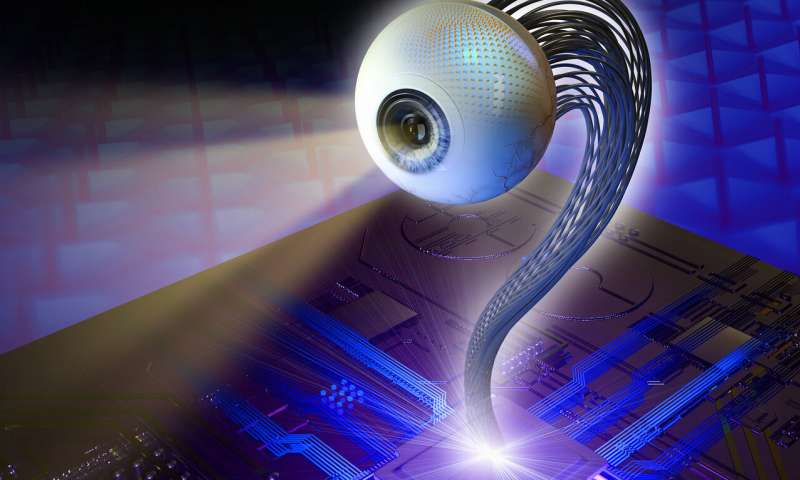Artificial eye comes closer to human eye capabilities

A team of researchers at The Hong Kong University of Science and Technology, the University of California, Berkeley and Lawrence Berkeley National Laboratory has built an artificial eye with capabilities that come close to those of the human eye. In their paper published in the journal Nature, the group describes developing the eye and how well it compares to its human counterpart. Hongrui Jiang with the University of Wisconsin has published a News and Views piece outlining the work by the team in the same journal issue.
Science fiction television shows and movies have depicted robots with vision equal to or surpassing that of humans, along with bionic eyes implanted into people. Unfortunately, real science has not been able to keep pace with such devices—creating visual devices with a spherical shape and a hemispherical retina has proven to be quite challenging. In this new effort, the researchers have built an artificial eye that comes closer—it is modeled on the human eye, including the shape of its parts.
The artificial eye is made with an aluminum-lined tungsten shell that serves as a round casing. It has an iris and lens in front and a retina in the back. The casing is filled with an ionic liquid. What is groundbreaking though, is the retina. It has a base made of aluminum oxide dotted with pores—each of which hosts a photosensor. In the back of the retina are thin flexible wires made of a eutectic gallium–indium alloy that has been sealed using soft rubber tubes. The retina is held in place by a polymeric socket that allows for electrical contact between perovskite nanowires and the liquid-metal wires at the back. The nanowires are banded together and connect to a computer that processes light information coming from the retina.


The artificial eye is able to detect a range of light intensities that are close to that of the human eye. And its light sensitivity is also very near that of the human eye—it also responds to changes in light intensity faster than the human eye. It's capable of producing very high-resolution imagery, at least in theory. In the current model, the nanowires are banded together into groups of three or four wires, leaving the eyeball with a resolution of just 10x10 pixels, far short of the human eye. This is because of the size of the wires compared to the sensors—for the artificial eye to approach the resolution of the human eye, it will be necessary to connect millions of very tiny wires to the retina.Combining natural and artificial vision to treat a common form of blindness
More information: Leilei Gu et al. A biomimetic eye with a hemispherical perovskite nanowire array retina, Nature (2020). DOI: 10.1038/s41586-020-2285-x
No comments:
Post a Comment